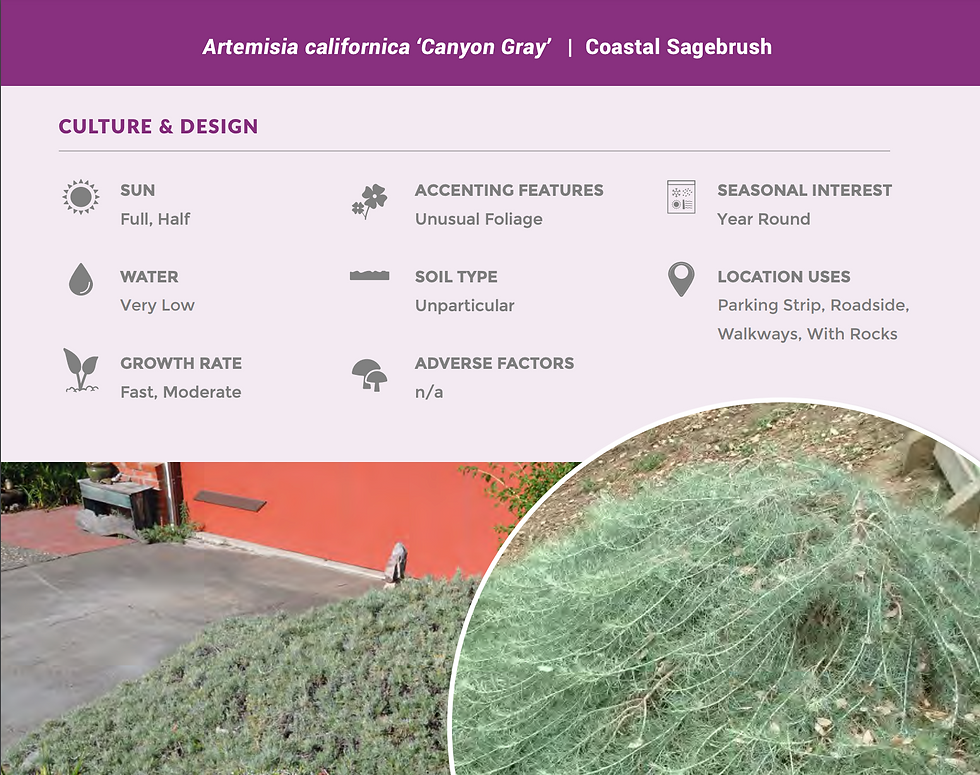
The dire drought situation in many parts of the United States and specifically Southern California has led to new incentives to replace your lawn / turf and now is the time to do it! The latest program is called the Turf Replacement Program by the Metropolitan Water District. Depending on where you live, additional rebates might be available from your local water agency.
According to the Metropolitan Water District's SoCalWaterSmart.com "The Turf Replacement program is a two-part application process. In order to receive a rebate, you must apply to reserve rebate funds prior to starting your project. After the reservation, you will have 180 days to complete the project and submit your request for a rebate.
Metropolitan Water District is offering a rebate of $2.00 per square foot up to 5,000 square feet of converted yard per year. Your water agency may offer an additional rebate incentive. To verify the full incentive offered for your area, please visit estimate my rebate.
Turf grass is a commonly used in landscaping. Unfortunately, it also requires a large amount of water, time, and money to maintain in our Southern California climate. Conversion to a California Friendly™ and native landscape may dramatically reduce both water and maintenance expenses. An example of potential savings is an experiment conducted using two properties in Santa Monica. One was a traditional turf landscape and the other was converted to a California Friendly™ landscape. Over the years, the California Friendly™ landscape has used 83% less water and required 68% less maintenance than the traditional turf landscape. You can see the details of this experiment here.
Often, turf is located in places where it is underutilized or not needed, such as side yards, parkways, street medians, around parking lots, and in business landscapes without pedestrians. Many customers find that they can remove turf in their landscape while improving the usefulness and curb appeal of their property. In fact, California Friendly™ and native landscapes not only save water and money, but they can be a beautiful, unique, and interesting replacement for traditional turf.
The intent of the Turf Replacement program is to have homeowners remove their existing grass and to replace it with organic, drought tolerant landscaping. Please note, synthetic turf is not an approved conversion option for this program. Following the success of other incentive programs focusing on landscaping and turf grass removal, the Turf Replacement program aims to combine turf removal, irrigation modification and rainwater retention or filtration to support reuse or soil absorption of rainwater. Every turf replacement project will include:
3 plants per 100 square feet of area transformed
A stormwater retention feature
No hardscape within the transformed area, except permeable hardscape
Replacement or modification of overhead spray sprinklers
The Turf Replacement Program takes a multi-pronged approach to maximize water utilization and conservation. Removing turf grass is one of the most water conscious adjustments a homeowner can make to reduce their water usage and associated costs. Converting irrigation systems to drip, hand-watering or installing water efficient micro-spray systems or rotating nozzles ensures that landscape watering is as efficient as possible. Finally, the addition of a sustainable approach in the new landscape works to reduce or prevent wasteful runoff through the use of a rainwater capture or filtration system.
Both Residential Properties and Commercial Properties Qualify
Both residential and commercial properties can apply for rebates. Not only are there rebates for turf removal, there is also rebates for water saving devices like smart meters and water saving irrigation.
Before Removing Turf:
Before you begin your project or remove any turf, you must apply for and receive an approval to proceed.
The pre-project approval to proceed will specify the estimated rebate amount based on the measured area and information you provided. Note: It is important that you measure your project area(s) accurately. Once your project start has been approved, your rebate amount cannot be increased from the amount approved.
Visit the SoCalWater$mart Turf Replacement Program Application to apply online for your approval to start your project..
Items to have ready before going online:
At least 5 color photos of the areas where you plan to remove turf.
A simple landscape plan which shows the area to be transformed and the type and location of your selected stormwater retention feature. Visit the Sustainable Approach page for more information on eligible stormwater retention features.
A photo or scanned copy of your recent water bill.
Set up an account with a valid email address and password. Be sure to use a current email address because all information about your rebate will be sent to this email account. The account will allow you to log back in after your project is complete to claim your reserved funding (see Post Project details below). Do not begin your work until you receive an email approval to start your project. This may take approximately two weeks.
Once you receive approval, you have 180 days to complete your project.
After completing your project, you are ready to submit Post Project: Request for Rebate.
After:
Once your project has been completed, visit the Turf Replacement Rebate Application to request your rebate by completing Post Project: Request for Rebate Application
The project start approval will specify the estimated rebate amount based on the square footage and information provided. Your square footage amount cannot be increased from the original amount reserved.
Submit a minimum of eight color photos of your completed project area consisting of:
The new plant coverage installed.
The sustainable landscape approach selected (i.e. rain garden, rain barrel, etc.).
At least one of each area where turf was removed.
The overhead irrigation conversion or modification incorporated.
There may be a post-project site inspection, provided by Metropolitan’s inspector.
It may take up to 2 weeks to review your application. Once all of the correct documents have been received and reviewed, and an inspection has been completed (if needed) you will be advised of the status of your rebate via email or your online dashboard. Upon approval, you will receive your rebate in 8-10 weeks."
If you have a residential or commercial property and need help with the rebate process, contact us! Not only can we help facilitate the rebate process, we can replace your turf along the necessary guidelines and update your irrigation system to both save water and money!
Updated: Aug 5, 2022

As drought conditions continue to increase in California, the push to get rid of lawns is also increasing. One great option to replace grass is using low water groundcovers. Groundcovers can offer a blanket of green using a fraction of the water that a lawn would need.
According to the Metropolitan Water District of Southern California's BeWaterWise.com, these 4 groundcovers are ideal for Southern California:
Emerald Carpet
The ‘Emerald Carpet’ is an evergreen groundcover that grows to 1’ tall by 6’-8’ wide. It is favored by many landscapers as the manzanita of choice for inland situations. Emerald Carpet has dark green leaves and exhibits compact growth. This variety is relatively tolerant of adverse soil conditions.


Canyon Grey
This reliable shrub, typically used as a groundcover, can reach 1-2 feet tall but can spread up to 10 feet wide. It has gray green, finely divided leaves that are threadlike. Very aromatic when foliage is crushed. It does well in coastal areas with full sun. It does best with afternoon shade in warm, inland areas. This groundcover tolerates clay or sandy soil but needs well draining soil. Flowers are inconspicuous. This is a great plant for dry slopes.


Pigeon Point
‘Pigeon Point’ Coyote Bush is a compact, evergreen ground cover that grows 18”- 24” tall and 10’-12’ wide. Its leaves are green; it has white flowers that bloom in the fall but they are not overly dramatic. It is important to plant this ground cover at least 6’-8’ apart. Otherwise they will overgrow each other and begin to pile upwards. ‘Pigeon Point’ is tolerant of ocean spray and is deer resistant.


Skylark
This ceanothus shrub variety has dark blue flower clusters that bloom profusely in the spring. This smaller growing selection grows to 3’ tall and wide. This plant tolerates coastal conditions but will also grow in inland, hot valleys as it does well in clay soil. This cultivar seems to bloom longer than other varieties. It does well in full sun but will tolerate dry shade also. Leaves are bright green and glossy.


If you're ready to change out your lawn for a low water groundcover, we can help! Many water districts are offering rebates for lawn removal and updating irrigation, we can help with that too! Contact us today and see what we can do for your commercial or residential property!

Updated: Nov 13, 2020

Living in our beautiful state has its challenges with water. Luckily, our climate allows for a wide variety of native plants as well as plants from other similar regions. The key to thriving plants is great irrigation.
Once you know your soil is conducive to the plants your are planting, making sure your irrigation is working right and has these elements for top efficiency and thriving plants:
Good complete coverage of area
Watering at the roots
Minimum runoff
A smart controller
Existing Systems Can be updated Without Being Replaced
Automatic controllers can waste water because they always come on, despite conditions, unless managed. Switching it out for a smart one that can sense when to water can make a big difference in saving water and helping plants to thrive by not being over watered.
Sprinkler heads can also be updated to spray with less evaporation and more direct control. Rotators can help let water absorb while watering other areas. Drip systems are a great way to get to the roots with as little waste as possible.
Updating your system with these elements will make a huge difference in your water bill and your plants will thrive!









































